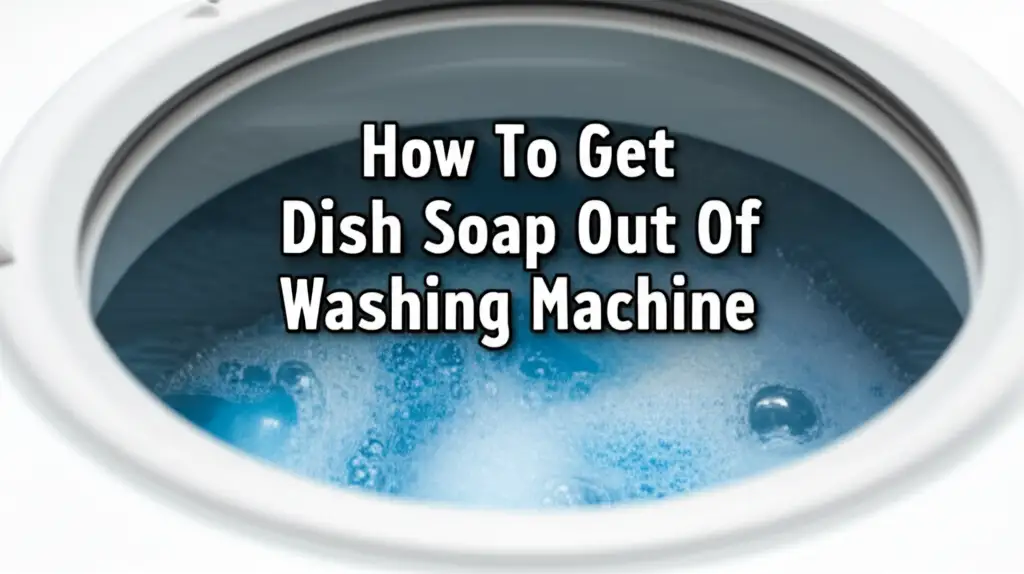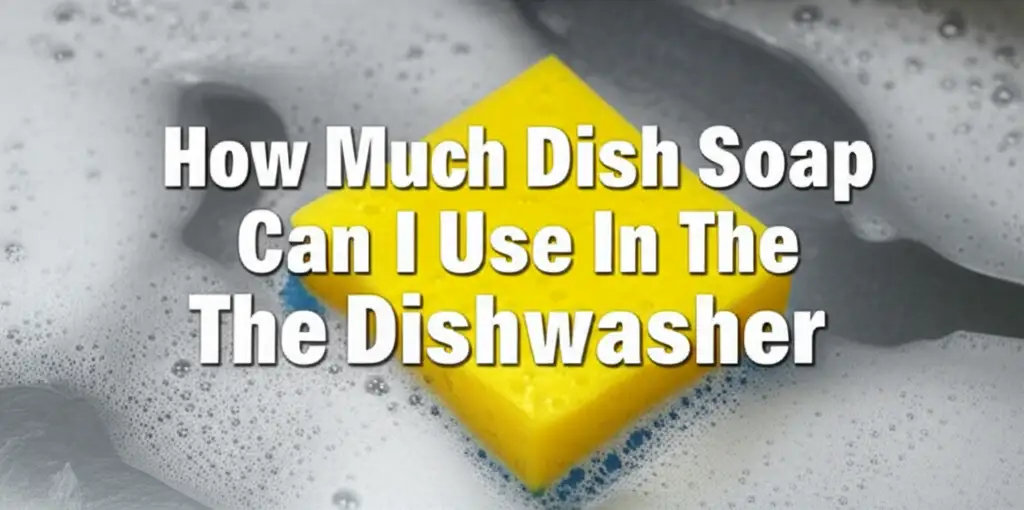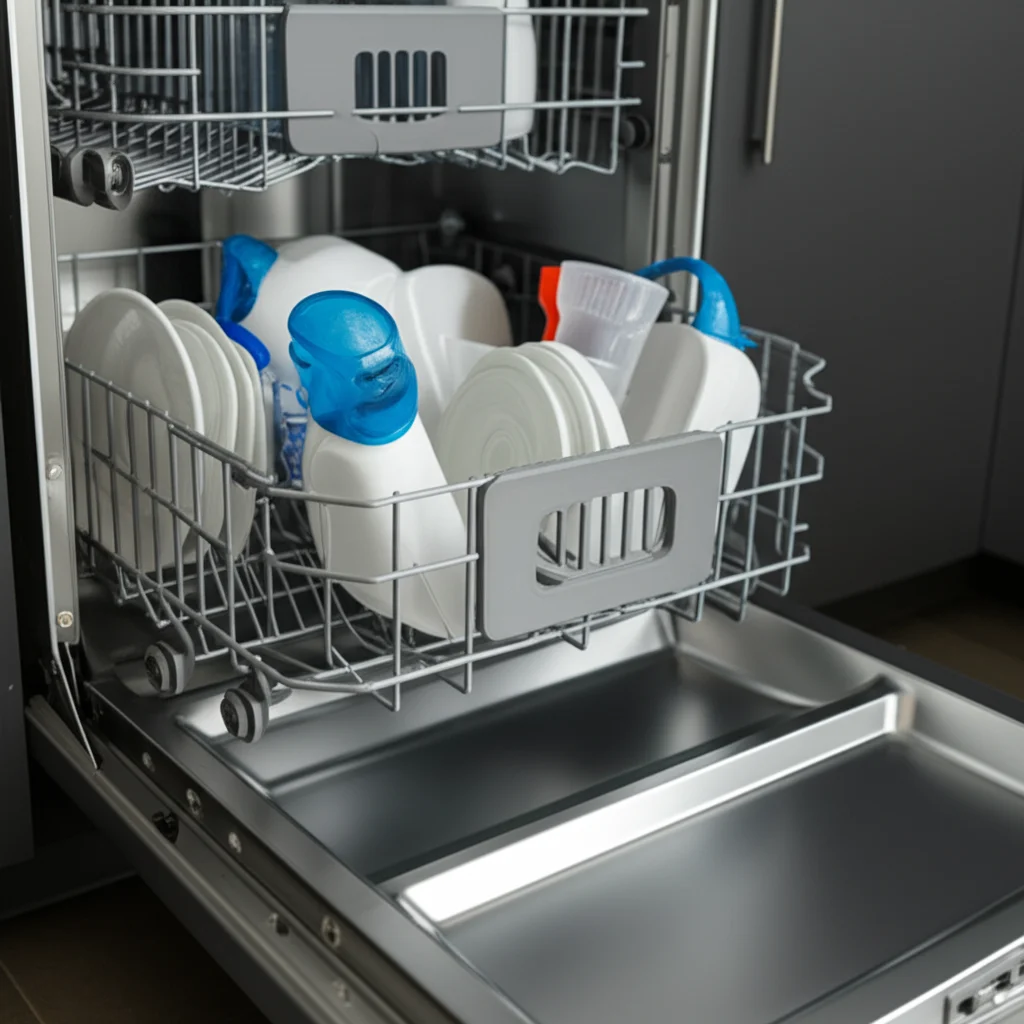· Kianna Connelly · Home Appliances, Laundry Care, Cleaning Tips · 14 min read
How To Get Dish Soap Out Of Washing Machine

How To Get Dish Soap Out Of Washing Machine
Have you ever mistakenly poured dish soap into your washing machine instead of laundry detergent? It’s a common, easy mistake to make. One moment, you’re loading clothes, the next, your laundry room is filled with an avalanche of suds. This unexpected foam party can be alarming, but don’t panic.
Getting dish soap out of your washing machine is an important task. Dish soap creates excessive suds that can overflow, damage your appliance, and leave residue on your clothes. This guide will walk you through clear, simple steps to manage the suds, clean your machine, and prevent this bubbly disaster from happening again. We will cover immediate actions, thorough cleaning, and effective prevention methods.
Takeaway
- Immediately stop the washing machine cycle.
- Unplug the appliance for safety.
- Remove all laundry items carefully.
- Scoop out as much foam as possible.
- Run multiple empty rinse cycles with cold water.
- Clean the dispenser and drum thoroughly.
- Understand why dish soap causes issues to prevent future mishaps.
To get dish soap out of your washing machine, immediately stop the cycle and unplug the machine. Carefully remove clothes and manually scoop out excess suds. Then, run multiple empty rinse cycles with cold water until no more suds appear, followed by a thorough wipe-down of the drum and dispenser.
Immediate Action When Your Washing Machine Foams Up
The first moments after realizing you’ve put dish soap in your washing machine are critical. Do not ignore the problem hoping it will go away. Ignoring it can lead to bigger issues, like water damage or appliance breakdown. Your quick response can save your machine and your home from a watery, sudsy mess.
The moment you see excessive suds, hit the “Stop” or “Cancel” button on your washing machine. This action stops the cycle immediately, preventing more suds from forming and overflowing. Some machines might drain automatically, but others will simply pause. If your machine is mid-cycle, the drum may remain full of water and foam.
After stopping the machine, the next crucial step is to unplug it from the power outlet. This ensures your safety while you work on the machine. It also prevents any accidental restarts or electrical issues. Safety always comes first when dealing with appliances and water.
Once the machine is off and unplugged, assess the level of suds. Are they overflowing? Are they just inside the drum? This assessment helps you plan your next steps. The more suds you have, the more effort you will need to put into cleaning them out. Understanding the problem size helps you choose the right tools. Remember, can I put dish soap in my washing machine is a common question, and the answer is usually no, precisely because of these sudsing issues.
Removing Clothes and Scooping Out Excess Suds
With the machine stopped and unplugged, your next task is to manage the immediate mess. This involves carefully taking out your laundry and starting the process of suds removal. This step might be messy, but it is necessary. Have some towels or a bucket ready.
Carefully open the washing machine door. Expect a surge of suds. If the water level is high, you might need to bail out some water first. Use a small bucket or a sturdy cup to remove water and suds. Place the removed water into a sink or bathtub. You will want to scoop out as much of the foam as possible before removing clothes.
Once the water level is lower or manageable, carefully take out each item of laundry. The clothes will be covered in suds and residue. Place them in a separate laundry basket or directly into a bathtub. You will need to re-wash these clothes later to remove any remaining dish soap. This prevents potential skin irritation or residue on your garments. For information on handling specific residue, see how to get dish soap stains out of clothes.
After removing all the clothes, you will likely still have a considerable amount of suds in the drum. Use old towels to absorb as much of this remaining foam as possible. Wad up the towels and press them against the suds, letting them soak up the excess. Wring out the towels into a sink or bucket. Repeat this process until you have removed a significant amount of the visible suds. This manual removal reduces the number of rinse cycles needed later.
The Rinse and Drain Strategy to Eliminate Foam
Once you have manually removed as many suds as possible, it is time to let the machine do some of the work. Running empty rinse and drain cycles is the most effective way to flush out residual dish soap. This process may require multiple repetitions. Do not rush this step, as leftover suds can cause problems in future washes.
Close the washing machine door and select a “Rinse and Spin” or “Rinse Only” cycle. Make sure to use cold water for these cycles. Cold water helps to break down the suds without activating more of the soap. Hot water can make suds worse by helping the soap to dissolve and activate further. Run this cycle completely.
After the first rinse cycle finishes, open the door and check the machine. Do you still see suds? It is highly likely you will, especially after the first few tries. The goal is to see clear water with no foam. Repeat the “Rinse and Spin” cycle as many times as needed. This could be anywhere from two to five times, or even more, depending on how much dish soap was initially added.
For particularly stubborn suds, consider adding a small amount of white vinegar to the dispenser drawer before a rinse cycle. About half a cup of white vinegar can help to neutralize the alkalinity of the soap and break down the suds faster. Do not add more soap or laundry detergent during these cycles. Your only goal is to remove the existing suds. Continue rinsing until the water drains clearly, and no suds are visible inside the drum.
Cleaning the Dispenser and Drum Thoroughly
After successfully flushing out the majority of the suds, you must give your washing machine a deep clean. Residual dish soap can hide in the detergent dispenser, rubber gasket, and even the internal hoses. A thorough cleaning prevents future sudsing issues and maintains the appliance’s hygiene. Skipping this step means you might face a suds problem again soon.
Start by cleaning the detergent dispenser. This drawer often collects leftover detergent, fabric softener, and now, dish soap residue. Pull out the dispenser drawer if your machine allows it. Wash it thoroughly under hot running water, scrubbing away any sticky or foamy residue. Use an old toothbrush or a small brush to reach into crevices. If the drawer is not removable, wipe it down meticulously with a damp cloth until it is completely clean.
Next, focus on the washing machine drum and the rubber gasket (for front-loaders). Use a clean cloth dampened with plain water to wipe down the inside of the drum. Pay special attention to the rubber seal around the door opening on front-load machines. Suds and moisture can get trapped here, leading to mildew growth and lingering soap residue. Pull back the folds of the gasket and wipe them clean.
Finally, run a hot water cleaning cycle. This cycle helps flush out any remaining soap from the internal pipes and hoses. You can add one or two cups of white vinegar directly into the drum before starting this cycle. Vinegar acts as a natural cleaner and helps dissolve soap film. Some modern washing machines have a dedicated “Tub Clean” or “Self-Clean” cycle. Use this if available. This comprehensive cleaning ensures your machine is ready for normal laundry cycles again.
Drying Out Your Washing Machine After a Suds Incident
Once you have cleaned and rinsed your washing machine, proper drying is essential. Leaving moisture inside the drum or dispenser can lead to unpleasant odors, mold, and mildew growth. This is particularly important after a sudsing incident, as the excess foam might have reached areas that usually stay dry. A well-dried machine functions better and lasts longer.
After your final rinse or cleaning cycle, open the washing machine door wide. Leave it ajar for several hours, or even overnight if possible. This allows air to circulate inside the drum, helping to dry out any residual moisture. Good airflow prevents a damp environment where mold and mildew thrive. For front-load machines, leaving the door open is crucial to dry the rubber gasket as well.
Use a clean, dry cloth to wipe down the inside of the drum. Pay extra attention to hard-to-reach areas and crevices. For front-loaders, thoroughly wipe the rubber gasket, making sure it is completely dry. Any lingering moisture in these areas can cause musty smells to develop. These odors can transfer to your laundry during subsequent washes.
Also, dry the dispenser drawer thoroughly. If you removed it, make sure it is completely dry before putting it back. If it is not removable, wipe all surfaces until dry. This prevents any remaining dish soap residue from hardening or becoming sticky. A completely dry machine is less prone to future issues and ensures your next load of laundry smells fresh and clean.
Understanding Why Dish Soap and Washing Machines Don’t Mix
It is important to understand why dish soap causes such a problem in your washing machine. This knowledge helps prevent future accidents. Dish soap and laundry detergent serve different purposes and have distinct chemical compositions. Using the wrong one can lead to more than just a bubbly mess. Knowing the difference protects your appliance and your clothes.
Dish soap, like the kind you use for handwashing dishes, is designed to create a lot of suds. These suds help lift grease and food particles from plates and pans. It has a high foaming agent content. When you pour dish soap into a washing machine, even a small amount, these foaming agents react intensely with the machine’s agitation and water. This creates an overwhelming amount of foam that quickly fills the drum and can overflow.
Laundry detergents, on the other hand, are formulated to be low-sudsing. They are designed to clean clothes effectively without producing excessive foam. This is because washing machines use mechanical action and precise water levels to clean. Too many suds can interfere with this action. Suds can cushion clothes, preventing proper cleaning. They can also prevent water from draining correctly.
The high sudsing action of dish soap can also damage your washing machine over time. The foam can build up in internal components like pumps and hoses. This buildup can clog filters or stress the pump, leading to malfunctions or leaks. Excessive suds can also push past door seals, causing water leaks onto your floor. This can create a significant water damage risk. If you are curious about specific usage, you can explore how much dish soap can I use in the washing machine to understand why even small amounts are problematic.
Preventing Future Dish Soap Mishaps in Your Laundry
Accidents happen, but with a few simple strategies, you can significantly reduce the risk of mistakenly adding dish soap to your washing machine again. Prevention is always better than dealing with a sudsy overflow. By implementing clear habits and smart storage, you can keep your laundry routine smooth and efficient.
One of the easiest ways to prevent mix-ups is to store your cleaning products separately. Keep laundry detergent, fabric softener, and other laundry-specific products in the laundry room. Store dish soap, dishwasher detergent, and kitchen cleaners in the kitchen. This physical separation helps reinforce which product belongs where. It reduces the chance of grabbing the wrong bottle, especially when you are in a hurry.
Consider labeling your containers clearly. If you buy products in bulk and transfer them to smaller, unmarked bottles, make sure to label them. Use a permanent marker or a label maker to clearly write “Laundry Detergent” or “Dish Soap” on each bottle. This visual cue can prevent confusion, especially if different household members do laundry. A quick glance at the label can save you from a major suds problem.
Educate everyone in your household, especially children or new users of the washing machine, about the difference between detergents. Explain why dish soap should never go into the washing machine. Show them where the correct laundry detergent is stored and how much to use. A little bit of knowledge goes a long way in preventing mistakes. Just like understanding how much dish soap can I use in the dishwasher is crucial for that appliance, knowing the limits for your washing machine is vital.
Finally, develop a habit of double-checking the bottle before you pour. Even if you think you have the right one, a quick read of the label takes only a second. This simple habit can save you a lot of time and effort in cleaning up suds. Always use a laundry detergent specifically designed for washing machines.
FAQ Section
What happens if you put dish soap in a washing machine? If you put dish soap in a washing machine, it creates excessive suds that can overflow the machine. These suds can interfere with the washing process, damage the appliance’s pump and seals, and leave a sticky residue on clothes. It can also cause water leaks and potential floor damage. The machine may also struggle to drain properly due to the foam.
Can dish soap damage a washing machine? Yes, dish soap can damage a washing machine. The excessive suds can clog drains and pumps, leading to motor strain and potential failure. Suds can also force water past seals, causing leaks and water damage to electrical components or your home. Long-term use can lead to residue buildup that affects machine performance.
How do you get suds out of a washing machine quickly? To quickly get suds out of a washing machine, stop the cycle immediately and unplug the machine. Remove clothes and manually scoop out as much foam as possible using a cup or towels. Then, run several empty “Rinse and Spin” cycles with cold water until no suds are visible. Add a small amount of white vinegar to help break down stubborn foam.
What to do if clothes have dish soap residue? If your clothes have dish soap residue after a sudsing incident, re-wash them with proper laundry detergent. Use a standard wash cycle with the appropriate water temperature for your fabric. Avoid adding any more soap. The goal is to rinse away the dish soap completely. You may need to run an extra rinse cycle to ensure all residue is gone.
Can I use vinegar to remove suds? Yes, white vinegar is effective at helping to remove suds. Add about half a cup of white vinegar directly into the washing machine drum or detergent dispenser before running an empty rinse cycle. Vinegar is acidic and helps to neutralize the alkaline soap, breaking down the suds and flushing them away more efficiently. Do not use cleaning vinegar as it is too strong.
How long does it take for suds to go away? Suds may not go away on their own. They can persist for multiple cycles if not properly addressed. Manually removing suds and running several empty rinse cycles can take anywhere from 30 minutes to a few hours, depending on the amount of dish soap used. Persistent suds require repeated rinsing until the water runs clear.
Conclusion
Mistakenly adding dish soap to your washing machine can feel like a disaster, but it is a fixable problem. Your quick action makes a big difference. Remember to stop the cycle immediately, unplug the machine, and manually remove excess suds. Following up with multiple cold water rinse cycles is vital for flushing out all residual foam. Do not forget to thoroughly clean the dispenser and drum, ensuring no sticky residue remains.
Understanding the difference between dish soap and laundry detergent is key to preventing this issue from recurring. Dish soap creates excessive suds not suitable for your washing machine’s mechanics. Store your cleaning products separately, label them clearly, and educate household members to avoid future mishaps. By taking these steps, you can keep your appliance running smoothly and your laundry fresh. Keep your washing machine happy by always using the correct detergent.





